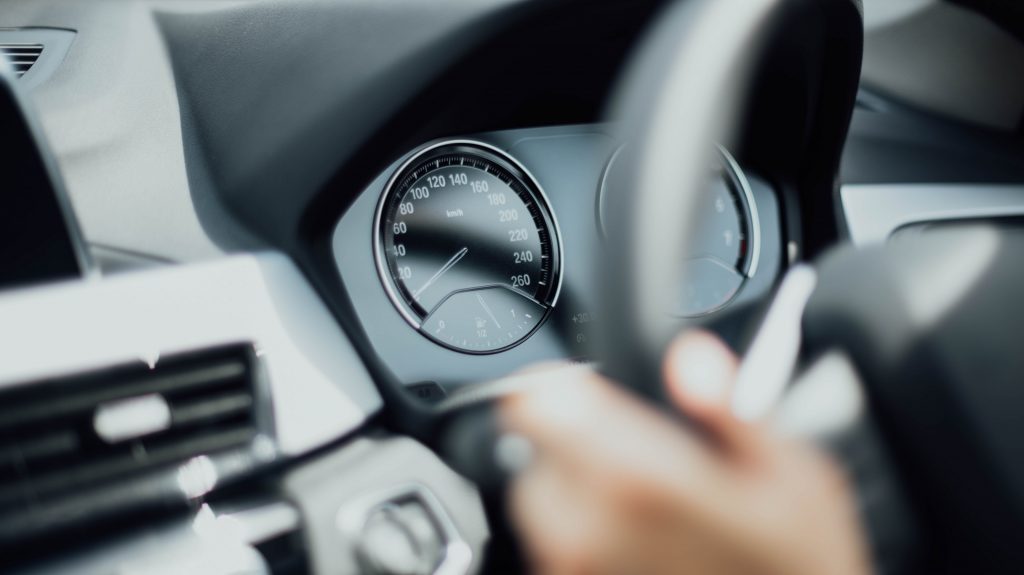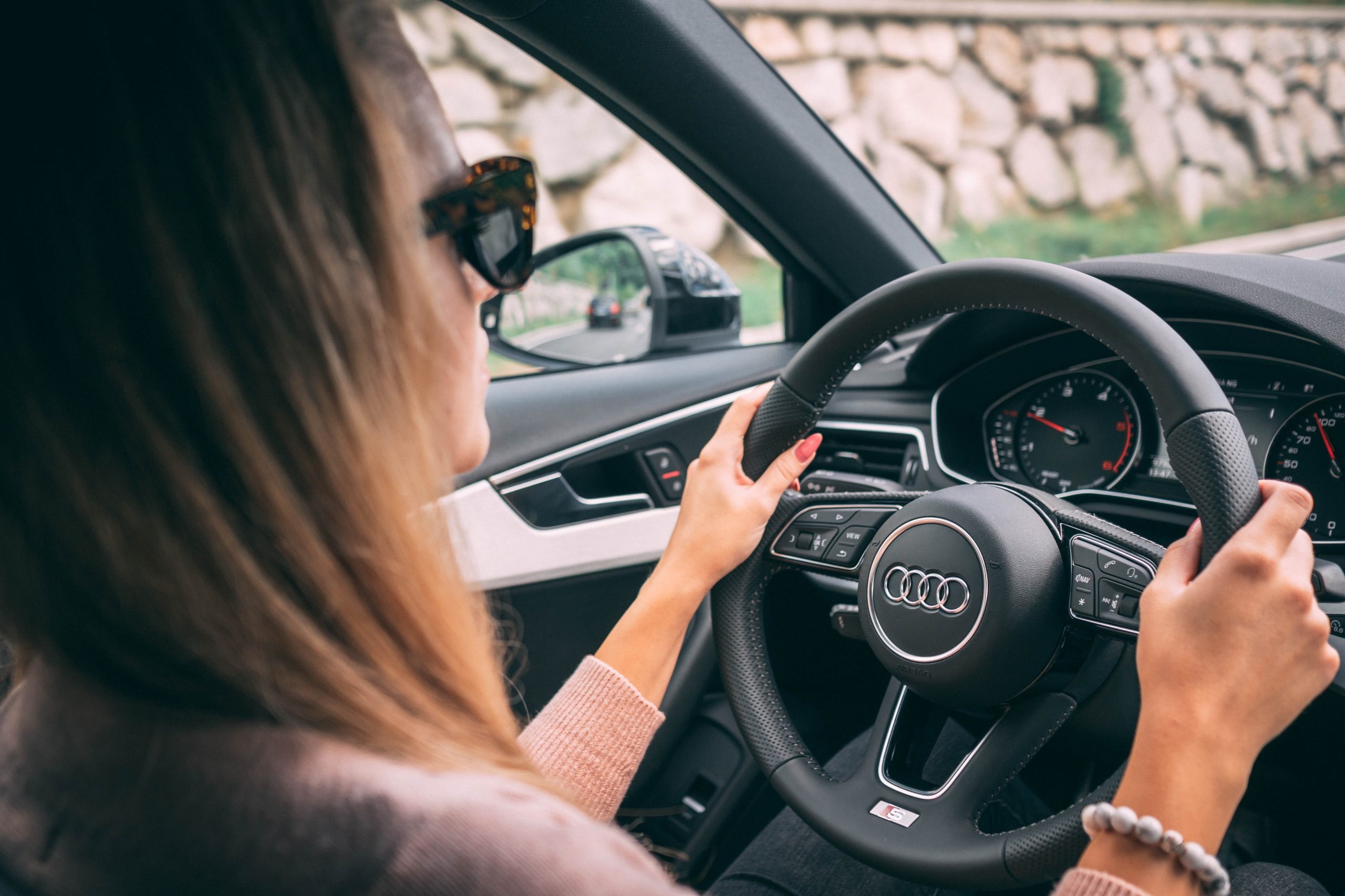It is unsafe to drive if you have a vision impairment or you’re Legally Blind. Learn the facts and figures about driving with a vision impairment. Although strong eyesight is obviously necessary for safe driving, each state in the United States sets its own threshold for “normal” vision acuity. While these requirements can vary, in order to pass a vision test for a basic driver’s license, a person’s vision must be at least 20/40 in both eyes.
In addition, most states have a procedure for obtaining a driver’s license even if you don’t match the visual requirements. This method typically comprises obtaining thorough reports from an optometrist or ophthalmologist, scheduling periodical reexaminations or updates, additional driving training, a more difficult road test, and imposing permit restrictions.
An unrestricted license entitles its holder to drive without corrective glasses in any place and for any distance, in every light condition, day or night, on any road, at any legal speed, and in any regularly equipped vehicle, without the use of additional or special mirrors. The most prevalent restriction is that corrective lenses must be worn when driving.
The most popular exception for those with serious vision impairments recognizes the benefits of daytime driving but prohibiting nighttime or low-light driving. State-by-state restrictions on vision testing include mandating the use of corrective lenses, forbidding freeway driving, limiting the region in which driving is permitted, and installing more mirrors (left and right outside, wide-angle, panoramic, and fender-mounted). Montana issues an area-restricted driver’s license, which specifies things like driving from home to the grocery store, driving for medical reasons, or driving to church. Most states have laws allowing drivers to use telescopic lenses and demonstrate skill with various types of visual aids when necessary.
Understanding the terminology for legally blind driving
When we hear the word “blind,” we usually think of someone who is unable to see anything—a person who suffers from a condition known as no light perception. Only 10-15% of patients with documented eye problems are entirely blind, according to the American Foundation for the Blind. As a result, there are a variety of blindness classifications to assist us in comprehending what a person can and cannot see.
The scores linked with the Snellen eye chart—a document with which most of us are familiar—are used to quantify these categories. The Snellen chart is placed 20 feet away from a person who covers one eye and tries to read the symbols with the other. You are said to have 20/20 or perfect vision if you can read the digits on the eighth line. When the second number is significantly higher, we can see how far a person’s vision differs from the norm. A person with 20/50 vision, for example, must be 20 feet away to see what someone with perfect vision sees from 50 feet away.
Understanding this can help you grasp what it means to be legally blind. You must have a visual acuity of 20/200 or worse with your greatest correction on to be legally blind (glasses or contacts). The World Health Organization classifies visual impairment into numerous categories. Low vision is defined as a visual acuity of 20/60 to 20/200 in the better eye with best possible correction, or a comparable visual field loss of less than 20 degrees in the better eye. Blindness is defined as a visual acuity of less than 20/400 in the better eye with the best available correction, or a matching visual field loss of less than 10 degrees in the better eye.
Unless you know about the most advanced, sight-enhancing medical equipment on the market today, driving while legally blind may seem like an oxymoron. By carefully analyzing their vision and providing the appropriate medical equipment to enhance it, we enable our legally blind patients do a variety of crucial things, such as driving.
Legally blind driving with bioptic glasses or “telescope glasses”
Bioptic driving is a type of driving that combines the patient’s general vision with intermittent spotting through a small telescopic system to increase the patient’s distant vision sharpness. About 95% of the time, bioptic patients drive with their own vision carrier. The patient swiftly peers through the bioptic telescope to offer details such as street signs, traffic lights, and far-off objects when utilizing it. The brief use of the bioptic telescope is similar to the fast glance back in the rearview mirror that all drivers use. Bioptic driving necessitates meticulous fitting of the equipment, as well as significant training in both bioptic use and behind-the-wheel driver training.
A multidisciplinary approach is required to determine whether a visually impaired person can become a bioptic driver. Low vision specialists, physicians, driving rehabilitators, occupational therapists, and orientation and mobility teachers are all possible candidates. The procedure comprises a variety of checks and balances to weed out people who aren’t likely to be safe bioptic drivers while identifying those who are.
Legally blind driving laws
Driving when legally blind necessitates the use of appropriate vision aids, common sense, and knowledge of applicable state laws. Most visually challenged people, for example, prefer to drive during the day and in excellent weather because the light is better in those settings. Because state law governing the use of telescopic lenses and other vision-enhancing devices is highly complex and varies greatly, it’s critical to understand your state’s specific restrictions. On their website, Prevent Blindness, a major national volunteer eye health and safety group, has compiled a comprehensive list of state vision screening and “standards for a license to drive.” It’s a wonderful location to start learning about your state’s legislation.
Here are some examples of how certain states have enacted driving regulations based on those two variables, as well as the usage of vision-improving medical devices like bioptics.
Low vision patients in Texas can use a bioptic telescope to obtain a restricted driver’s license. They are qualified for a license even if their vision is as low as 20/200 without the telescope and 20/40 with the telescope. They also have a peripheral field requirement.
In Illinois, the practitioner (eye doctor) is required to report an unsuitable driver to the Department of Motor Vehicles; however, there is no similar requirement in Missouri. If they believe the patient should be tested or limited, they can contact an anonymous hotline.
In the United States, state legislation enabling bioptic (a bioptic is a telescope and carrier lens driving system) driving began more than three decades ago. Thirty-seven states now permit driving in some manner. Regrettably, the laws differ significantly from one state to the next. States such as Indiana have established regulations for vision levels, training, and continuing vision monitoring. States such as Indiana have established regulations for vision levels, training, and continuing vision monitoring. Some states permit bioptic driving but do not specify the training requirements for behind-the-wheel drivers.
Other states ignore the problem entirely, while others, such as Florida, have enacted “Catch-22 Laws” that allow patients to drive while wearing bioptics, but not to pass the vision test. We anticipate that, in the future, clinical experience and ongoing research will combine to bring the structured training program pioneered in Indiana to all states. Furthermore, we require graded licensing procedures that allow for restricted permits for those for whom bioptics is not the greatest option.
Visual acuity is the assessment parameter that changes the least from state to state. All but three states have specified minimum best-corrected visual acuity criteria for licensing, with the exception of New Jersey and Wyoming, where the criterion is 20/50.
Some states also require drivers to have specific visual field ranges, which mainly focus on the horizontal temporal field. Our eyes do not only see straight ahead. We have a visual field instead (also referenced as a field of vision). Vision acuity refers to how much detail we can see, whereas visual field refers to how far we can see when looking straight ahead. Healthy eyes allow us to have a horizontal field of vision that is fairly wide (155 degrees or more). Many states require a motorist to have a horizontal field of vision of 100 degrees or more in at least one eye. This allows drivers to focus attention on what is in front of them while catching enough critical facts on either side of their car.
The horizontal visual field has a wider range of requirements. Visual field testing is not necessary in sixteen states unless the individual has been referred to an optometrist after failing a visual acuity test or the visual acuity test was done using a visual aid like telescopic lenses.
Is it really safe to be driving legally blind?
The fight about how much freedom to give individuals vs how to keep them safe is ongoing, and it extends far beyond driving and vision.
Automobiles are statistically quite harmful. The majority of people should not be allowed to drive unless it is an emergency. This would save a lot of lives. That, however, is patently illogical. Even if it dramatically reduces mortality, most individuals would find this a wildly unwelcome restriction of freedom.
While it makes sense that drivers with poor visual acuity, limited peripheral fields, or both are more likely to be involved in car accidents, there are no published studies to back up this claim. Nonetheless, establishing strict national vision and vision testing standards for noncommercial passenger vehicle driver licensing would eliminate state-to-state inconsistencies, make comparing accident rates in different states easier, and could help eliminate poor vision as a cause of motor vehicle accidents if properly established and strictly enforced.
Do you find yourself struggling with your vision and are in need of low-vision devices or professional services providers? Let us help! Visit our Low Vision Clinic today to talk with one of our optical professionals.














